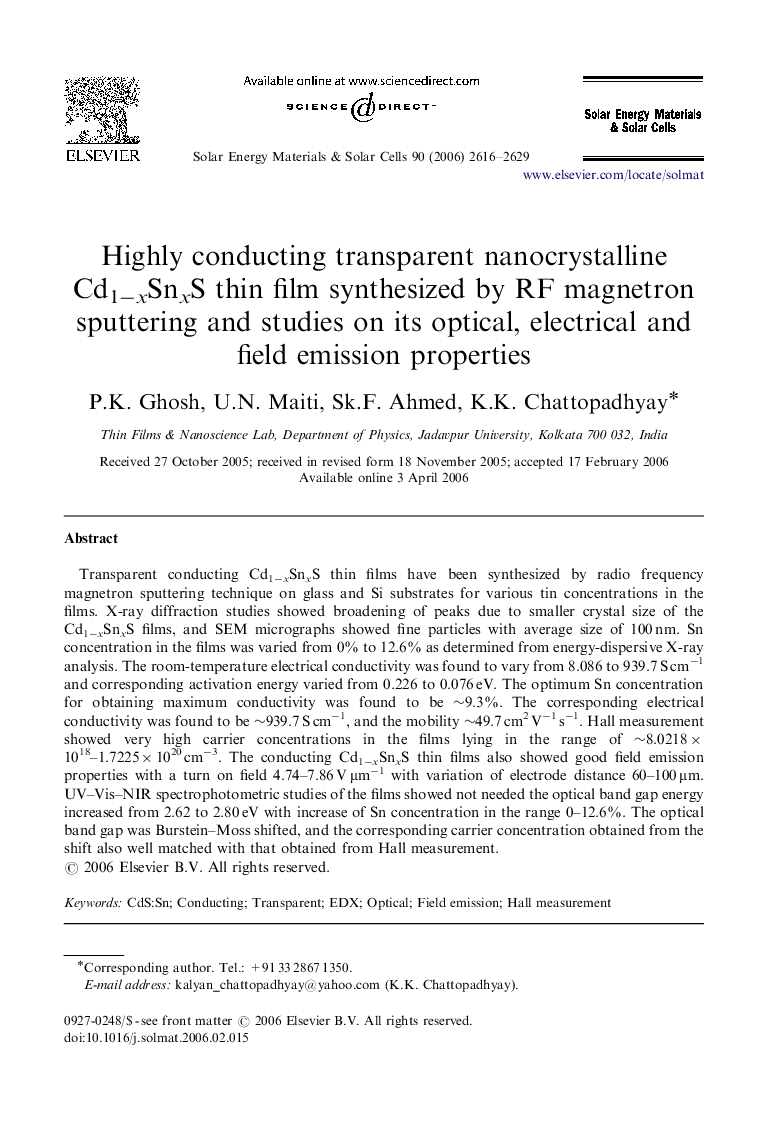| Article ID | Journal | Published Year | Pages | File Type |
|---|---|---|---|---|
| 81191 | Solar Energy Materials and Solar Cells | 2006 | 14 Pages |
Transparent conducting Cd1−xSnxS thin films have been synthesized by radio frequency magnetron sputtering technique on glass and Si substrates for various tin concentrations in the films. X-ray diffraction studies showed broadening of peaks due to smaller crystal size of the Cd1−xSnxS films, and SEM micrographs showed fine particles with average size of 100 nm. Sn concentration in the films was varied from 0% to 12.6% as determined from energy-dispersive X-ray analysis. The room-temperature electrical conductivity was found to vary from 8.086 to 939.7 S cm−1 and corresponding activation energy varied from 0.226 to 0.076 eV. The optimum Sn concentration for obtaining maximum conductivity was found to be ∼9.3%. The corresponding electrical conductivity was found to be ∼939.7 S cm−1, and the mobility ∼49.7 cm2 V−1 s−1. Hall measurement showed very high carrier concentrations in the films lying in the range of ∼8.0218×1018–1.7225×1020 cm−3. The conducting Cd1−xSnxS thin films also showed good field emission properties with a turn on field 4.74–7.86 V μm−1 with variation of electrode distance 60–100 μm. UV–Vis–NIR spectrophotometric studies of the films showed not needed the optical band gap energy increased from 2.62 to 2.80 eV with increase of Sn concentration in the range 0–12.6%. The optical band gap was Burstein–Moss shifted, and the corresponding carrier concentration obtained from the shift also well matched with that obtained from Hall measurement.
